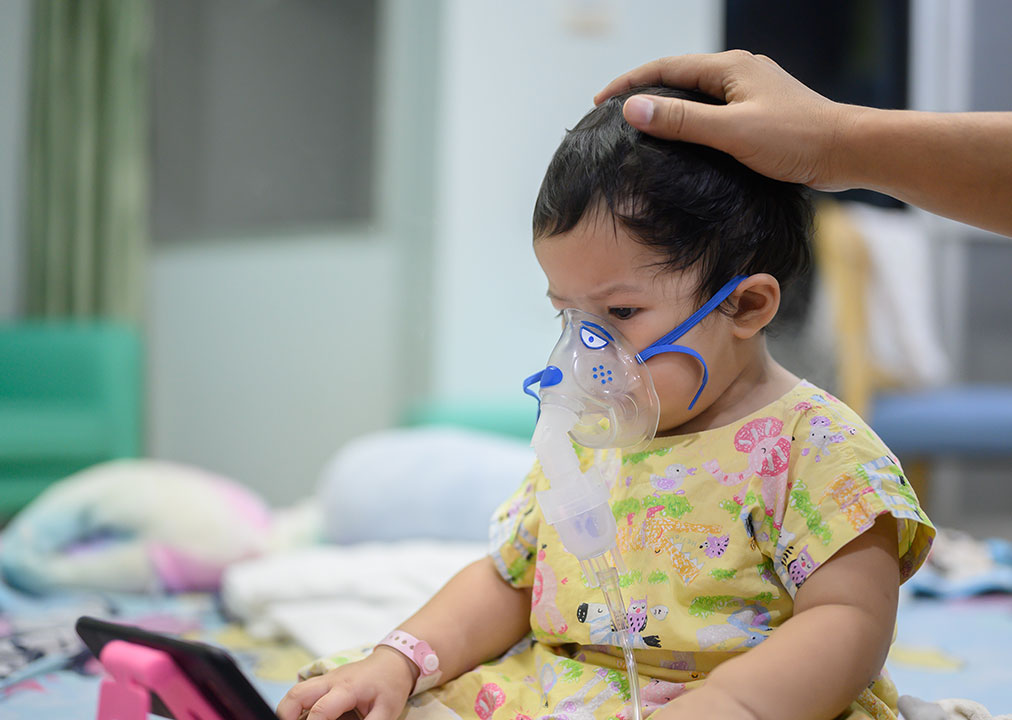Tension emerges between Trump immigration policies and agricultural industry – OSV News

Report on U.S. Immigration Policy and its Intersection with Sustainable Development Goals in the Agriculture Sector
Executive Summary
Recent policy discussions from the Trump administration have highlighted a significant conflict between stringent immigration enforcement and the labor requirements of the U.S. agriculture industry. This tension directly impacts several United Nations Sustainable Development Goals (SDGs), particularly those concerning food security, economic growth, and worker rights. This report analyzes the policy positions, their economic implications, and the potential pathways forward, framed within the context of the SDGs.
Policy Stances and Economic Realities
Administration’s Hardline Immigration Policy
The administration has articulated a firm position against amnesty for undocumented immigrants, emphasizing strict law enforcement. However, this stance creates a direct challenge for industries reliant on immigrant labor. This policy approach intersects with several SDGs:
- SDG 8: Decent Work and Economic Growth: A reduction in the available labor force could negatively impact economic output in key sectors.
- SDG 10: Reduced Inequalities: A blanket crackdown risks exacerbating the vulnerability of migrant workers, who may be driven further into precarious, unprotected work.
Proposed Solutions and Their SDG Implications
In response to labor shortage concerns from the agricultural industry, two primary solutions have been floated by the administration:
- Automation: Vice President JD Vance suggested that automation is a preferred solution to labor deficits, positioning it as a technological advancement. This aligns with SDG 9 (Industry, Innovation, and Infrastructure), which encourages upgrading technological capabilities. However, the transition to automation has profound implications for SDG 8, as it would reshape the nature of agricultural work and employment.
- Temporary Passes: President Trump has mentioned a potential “temporary pass” for workers in specific sectors like agriculture. While details remain unclear, such a measure could provide a partial solution to labor needs, impacting SDG 2 (Zero Hunger) by stabilizing the workforce responsible for food production.
Impact on Food Security and Labor Rights
Dependence on Migrant Labor for SDG 2 (Zero Hunger)
Experts emphasize that the U.S. food supply chain is heavily dependent on seasonal migrant labor, both documented and undocumented. Erin Corcoran, of the Kroc Institute for International Peace Studies, notes that fluctuating labor needs for harvesting and processing are difficult to fill with the domestic full-time workforce. A disruption to this labor supply poses a direct threat to agricultural productivity and, consequently, to achieving SDG 2 by ensuring stable access to food.
Worker Vulnerability and SDG 8 (Decent Work)
The current policy environment creates significant precarity for immigrant workers. J. Kevin Appleby of the Center for Migration Studies argues that without legal status, these essential workers are vulnerable to exploitation, including substandard wages and working conditions. This situation is in direct opposition to the principles of SDG 8, which calls for the protection of labor rights and the promotion of safe and secure working environments for all workers, including migrant workers.
Catholic social teaching, as cited in the analysis, reinforces this by upholding the dignity of work and the rights of workers, aligning with the core tenets of SDG 8 and SDG 1 (No Poverty).
Policy Recommendations for Sustainable Development
Strengthening Institutions and Reducing Inequalities
To resolve the tension between immigration policy and economic needs, experts propose several measures that align with fostering sustainable development.
Pathways to Align with SDGs
The following policy adjustments could create a more stable and just system, contributing positively to multiple SDGs:
- Reform Visa Programs: Adjusting the caps on temporary worker visas, such as the H-2B program, would allow more workers to gain legal status. This would strengthen legal migration pathways, supporting SDG 16 (Peace, Justice and Strong Institutions) by creating more orderly and manageable immigration systems.
- Provide Legal Status: Granting legal status to essential workers would protect them from exploitation, directly advancing SDG 8 (Decent Work) and SDG 10 (Reduced Inequalities).
- Simplify Cross-Border Movement: Reducing the complexity for temporary workers from Mexico and Canada to cross the border would improve labor mobility and efficiency, supporting the economic productivity necessary for SDG 8.
By implementing these changes, the administration can address the labor needs of essential industries, protect vulnerable workers, and make significant progress toward achieving key Sustainable Development Goals.
Analysis of Sustainable Development Goals in the Article
-
Which SDGs are addressed or connected to the issues highlighted in the article?
The article discusses issues related to immigration, labor rights, economic stability in the agricultural sector, and the legal status of workers. These topics are directly connected to the following Sustainable Development Goals (SDGs):
- SDG 2: Zero Hunger: The article’s focus on the agricultural industry and the farmworkers essential for its operation connects directly to the goal of ensuring sustainable food production.
- SDG 8: Decent Work and Economic Growth: This is a central theme, as the article explores the tension between immigration policy and the need for labor, the vulnerability of immigrant workers, and the call to protect their rights and provide “decent work.”
- SDG 10: Reduced Inequalities: The discussion addresses inequalities faced by migrant workers based on their legal status and advocates for well-managed migration policies to reduce their vulnerability.
- SDG 16: Peace, Justice and Strong Institutions: The article touches upon the need for a just legal framework that protects all individuals, including migrants, by providing them with legal status and access to justice against exploitation.
-
What specific targets under those SDGs can be identified based on the article’s content?
Based on the article’s content, the following specific SDG targets can be identified:
SDG 2: Zero Hunger
- Target 2.4: By 2030, ensure sustainable food production systems and implement resilient agricultural practices that increase productivity and production. The article highlights that the U.S. agricultural economy “heavily relies on immigrant labor” for seasonal work like picking and processing. A hardline immigration policy that disrupts this labor supply threatens the sustainability and productivity of these food production systems.
SDG 8: Decent Work and Economic Growth
- Target 8.8: Protect labour rights and promote safe and secure working environments for all workers, including migrant workers, in particular women migrants, and those in precarious employment. This target is directly addressed by J. Kevin Appleby’s statement that without legal status, workers are “left vulnerable to their unscrupulous employers, who will pay them nothing and force them to work in substandard conditions.” The call to “give them legal status to protect them and their rights” is a direct appeal to fulfill this target.
SDG 10: Reduced Inequalities
- Target 10.7: Facilitate orderly, safe, regular and responsible migration and mobility of people, including through the implementation of planned and well-managed migration policies. The article’s entire premise revolves around the challenges of U.S. immigration policy. It discusses the H-2A and H-2B visa programs, the “very, very small caps” on H-2B visas, and the “flip-flopping” on policy, all of which point to the need for more “planned and well-managed migration policies” to resolve the tension between enforcement and economic needs.
SDG 16: Peace, Justice and Strong Institutions
- Target 16.3: Promote the rule of law at the national and international levels and ensure equal access to justice for all. The argument to grant immigrant workers “legal status” is fundamentally about extending the protection of the rule of law to them. As the article points out, their current undocumented status leaves them vulnerable and without legal recourse against exploitation, thus denying them equal access to justice.
-
Are there any indicators mentioned or implied in the article that can be used to measure progress towards the identified targets?
The article mentions or implies several indicators that can be used to measure progress:
Indicators for SDG 8 and 16
- Proportion of migrant workers with legal status: The repeated calls to “give them legal status” make this a primary implied indicator. An increase in the number of agricultural workers with valid work visas or legal status would indicate progress in protecting their rights (Target 8.8) and ensuring they are covered by the rule of law (Target 16.3).
- Incidence of labor exploitation: The mention of workers being forced to “work in substandard conditions” implies that the number of reported cases of labor violations, wage theft, or unsafe working conditions among migrant workers is a key indicator of whether their rights are being protected.
Indicators for SDG 10
- Number of temporary work visas issued: The article specifically mentions the H-2A and H-2B visa programs. Erin Corcoran points out that “H-2B has very, very small caps.” Therefore, the number of visas issued annually under these programs and any policy changes to the caps serve as a direct, measurable indicator of how migration policies are being managed (Target 10.7).
Indicators for SDG 2
- Stability of the agricultural labor force: The article highlights the agriculture industry’s concern that “we really need labor.” This implies that a key indicator for the sustainability of food production (Target 2.4) is the ability to fill seasonal labor needs. A shortage of workers, which could result from restrictive immigration policies, would be a negative indicator.
-
Create a table with three columns titled ‘SDGs, Targets and Indicators” to present the findings from analyzing the article. In this table, list the Sustainable Development Goals (SDGs), their corresponding targets, and the specific indicators identified in the article.
SDGs Targets Indicators SDG 2: Zero Hunger 2.4: Ensure sustainable food production systems and implement resilient agricultural practices. Stability of the seasonal agricultural labor force. SDG 8: Decent Work and Economic Growth 8.8: Protect labour rights and promote safe and secure working environments for all workers, including migrant workers. Proportion of migrant workers with legal status; Number of reported labor rights violations or work in “substandard conditions.” SDG 10: Reduced Inequalities 10.7: Facilitate orderly, safe, regular and responsible migration and mobility of people, including through the implementation of planned and well-managed migration policies. Number of temporary work visas (e.g., H-2A/H-2B) issued; National policies on visa caps. SDG 16: Peace, Justice and Strong Institutions 16.3: Promote the rule of law at the national and international levels and ensure equal access to justice for all. Percentage of the immigrant workforce with legal status and access to legal recourse against exploitation.
Source: detroitcatholic.com

What is Your Reaction?
 Like
0
Like
0
 Dislike
0
Dislike
0
 Love
0
Love
0
 Funny
0
Funny
0
 Angry
0
Angry
0
 Sad
0
Sad
0
 Wow
0
Wow
0












































































